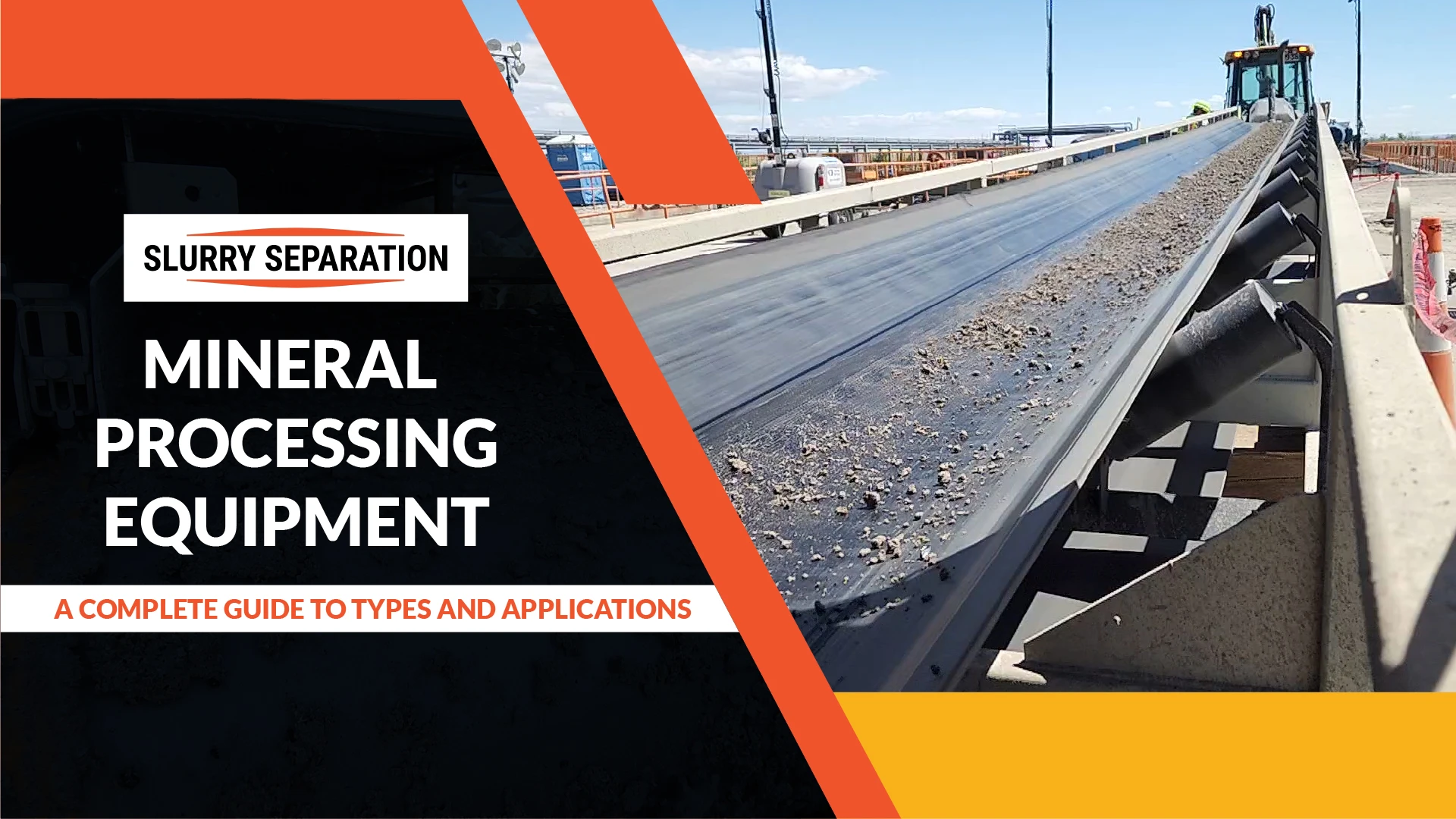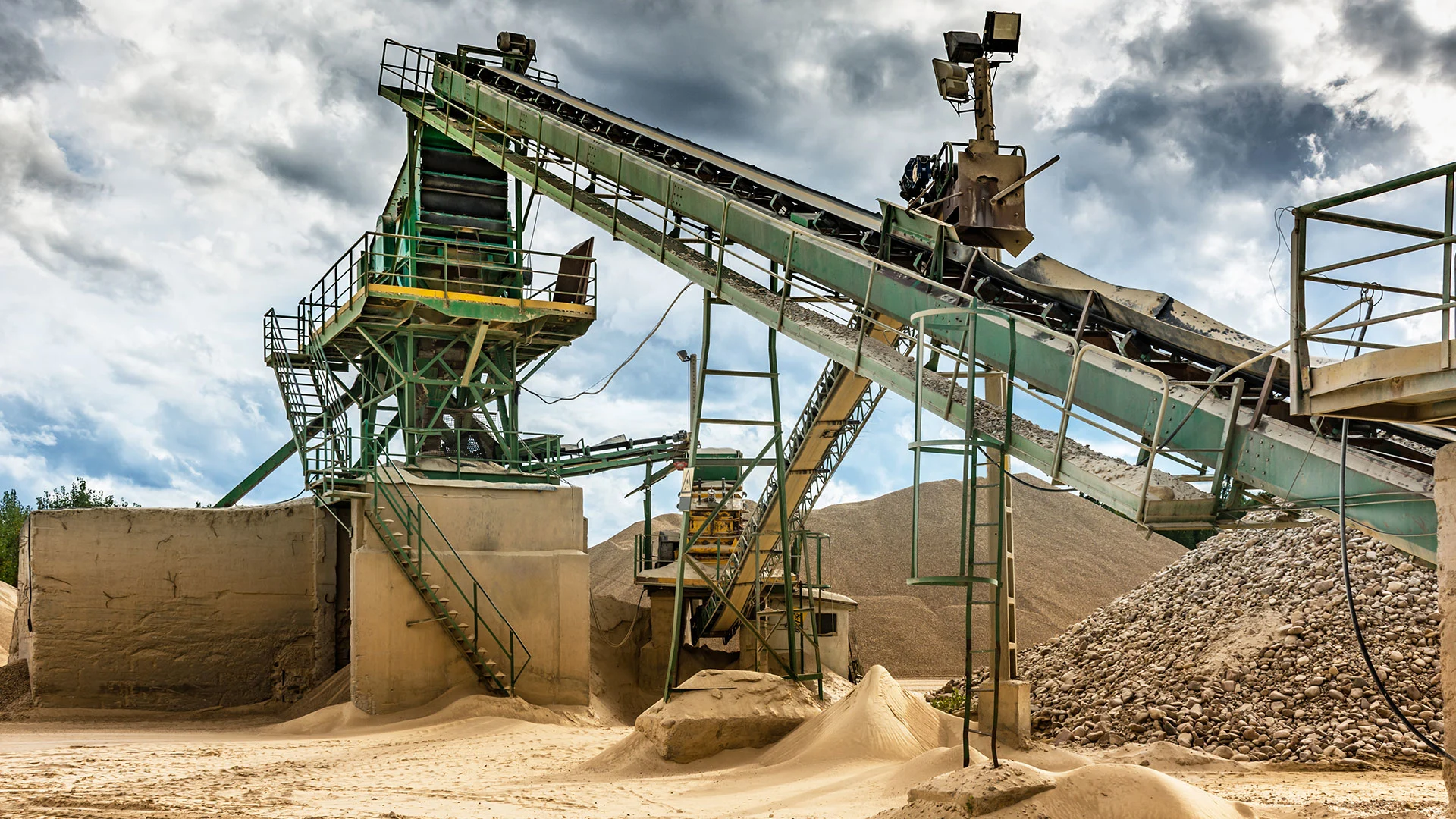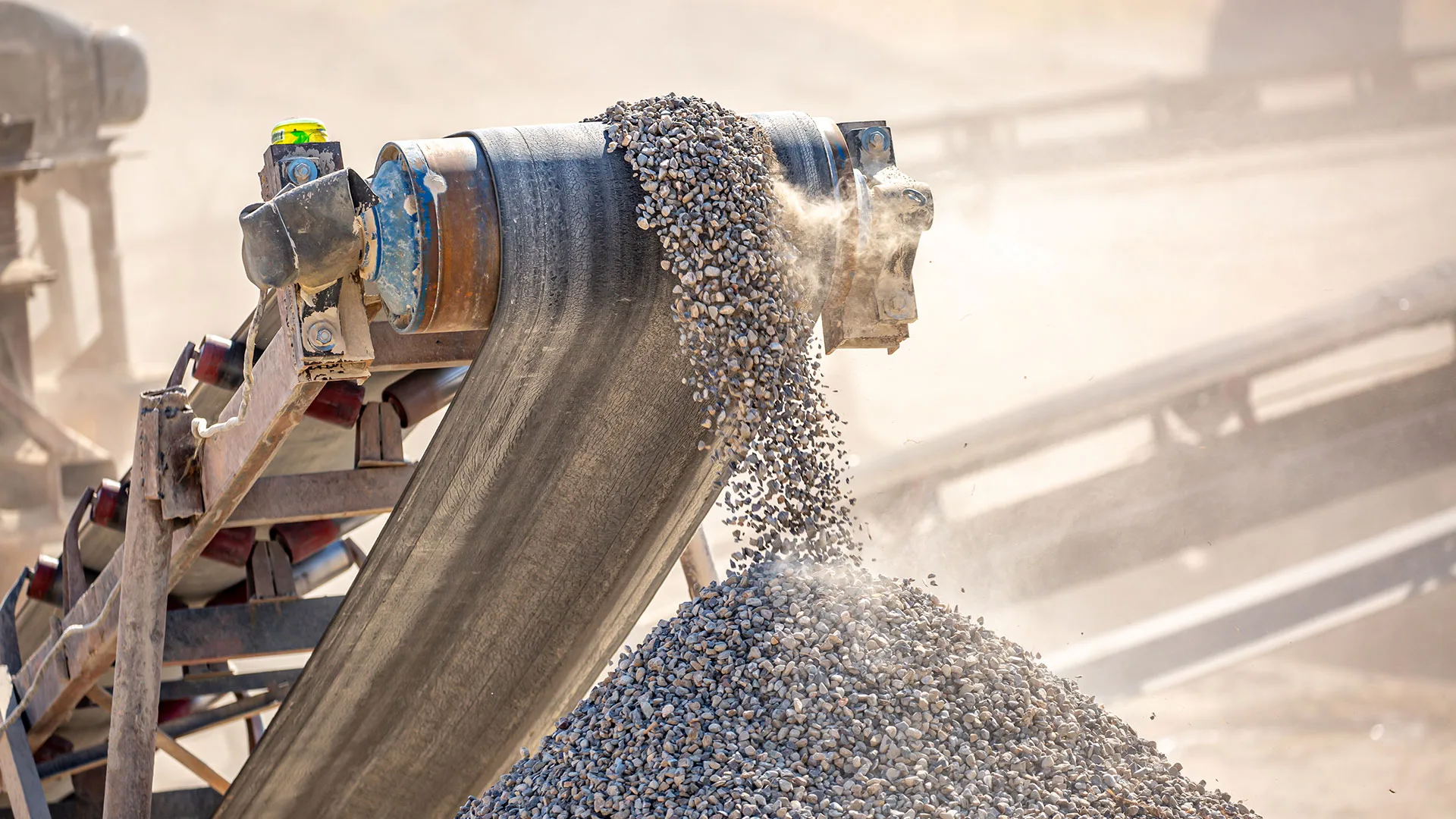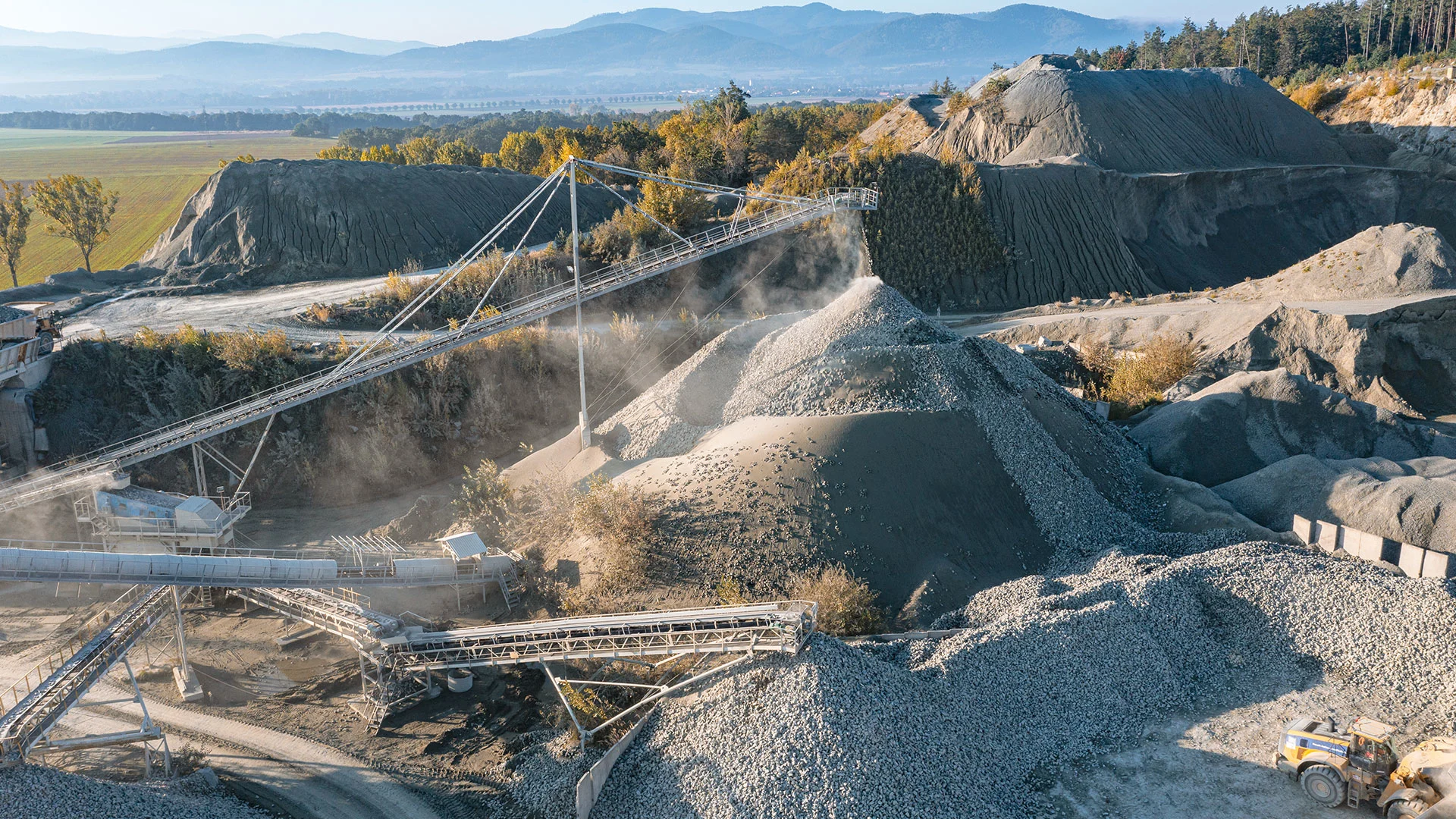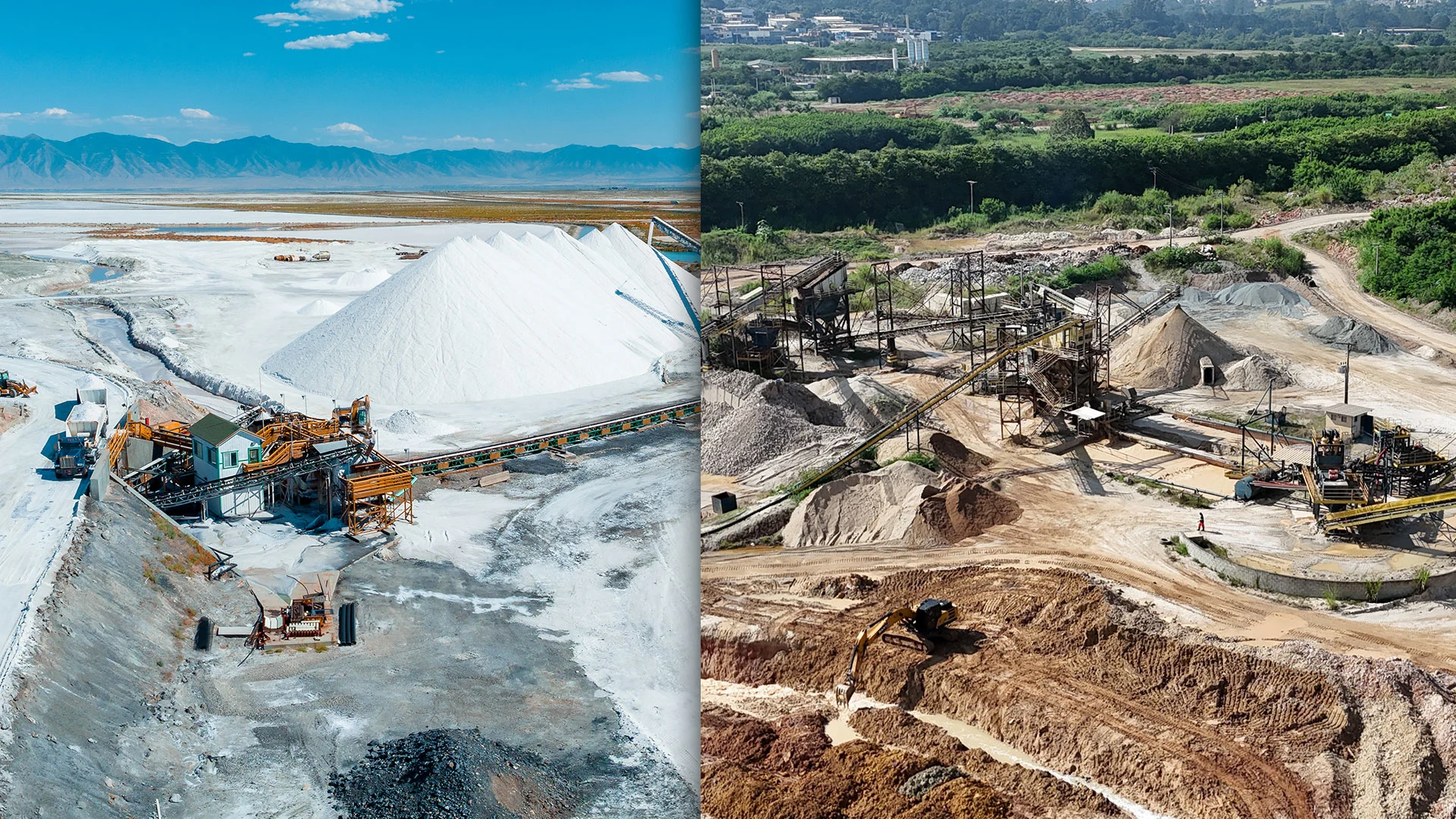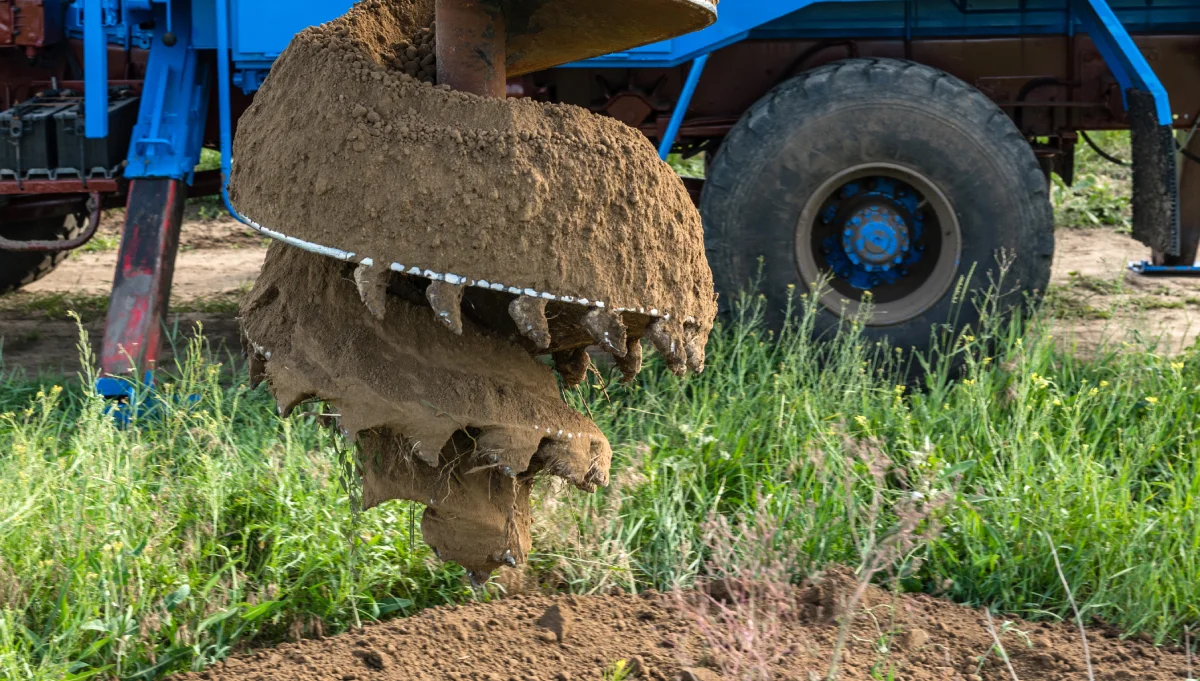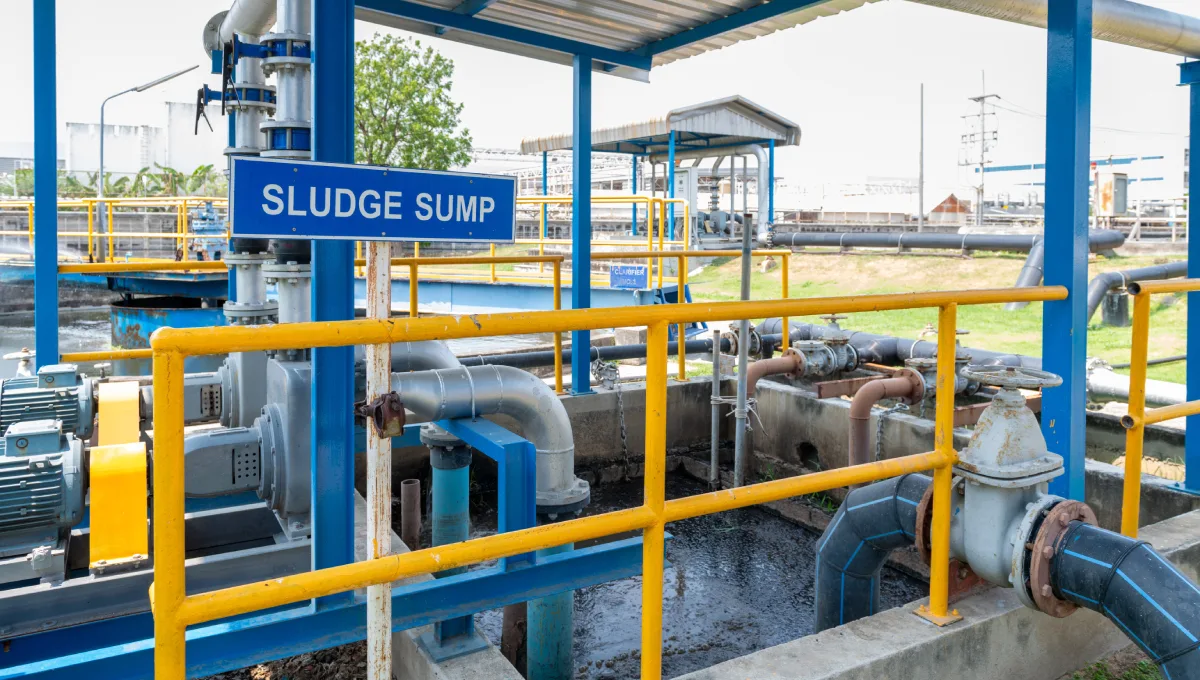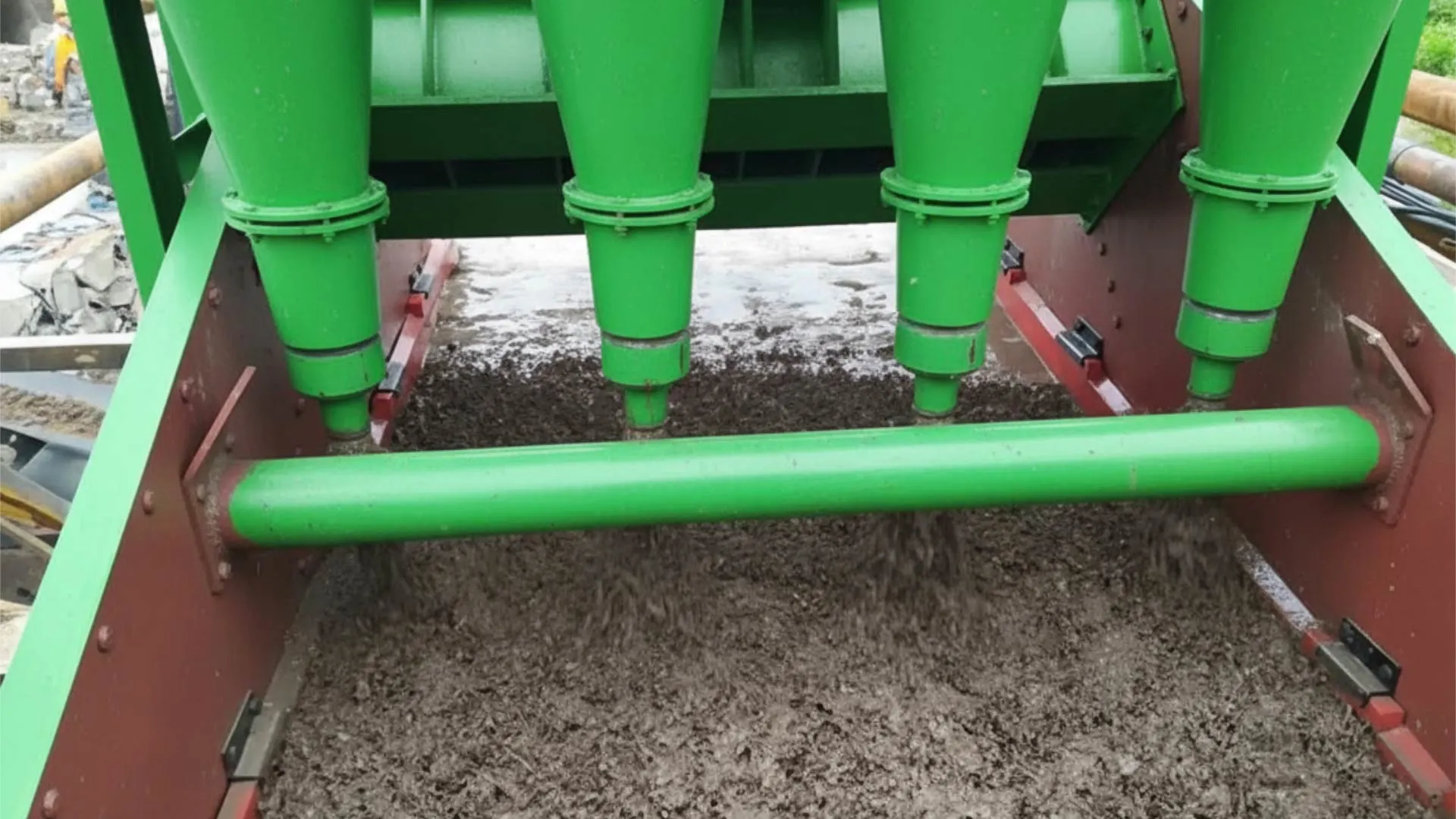- Mapping the Mineral Processing Journey: From Ore to Value
- Crushing and Grinding Systems: The Foundation of Ore Liberation
- Screening and Classification: Controlling Particle Precision
- Concentration and Beneficiation: Turning Ore into Output
- Dewatering and Tailings Management: Controlling Water, Maximizing Value
- Material Handling and Slurry Transfer: Keeping the Process Moving
- Evaluating the Right Mineral Processing Equipment Manufacturer
- The Future of Mineral Processing: Smarter, Cleaner, and More Efficient
- Conclusion: Partnering with Slurry Separation for Complete Processing Solutions
Mineral processing equipment serves as the cornerstone of profitability in today’s competitive resource industries. Every phase of mineral extraction, from crushing and grinding to classification and dewatering, depends on specialized systems that define recovery efficiency, energy consumption, and long-term reliability. When designed and maintained properly, this technology becomes the backbone of consistent output, lower operating costs, and sustainable growth across large-scale operations.
For procurement heads and engineering managers, selecting the right mining processing equipment is a strategic investment that extends far beyond initial procurement, dictating plant uptime, asset performance, and return on investment. Advanced systems from a reputable mineral processing equipment manufacturer minimize energy losses, reduce component wear, and sustain stable performance under variable ore and process conditions.
Innovation continues to reshape how mineral processing equipment manufacturers design and deliver solutions. Through automation, advanced materials, and environmental safeguards, modern systems achieve higher throughput with reduced energy consumption and improved safety compliance. Partnering with an experienced manufacturer ensures access to engineering expertise, customized configurations, and lifecycle support tailored to demanding industrial environments.
In a sector where accuracy and durability are critical to profitability, working with a trusted manufacturer provides long-term competitive advantage, operational consistency, and demonstrable performance increases that define contemporary mineral recovery.
Mapping the Mineral Processing Journey: From Ore to Value
Efficient mining and mineral processing equipment form the foundation of contemporary mineral recovery operations. Transforming raw ore into useful concentrate necessitates a well-coordinated network of systems that provide accuracy, dependability, and performance at all stages of the process.
The primary phases include:
- Crushing and Grinding: Reducing large rocks into smaller fragments to liberate minerals for downstream recovery.
- Classification: Sorting particles by size to ensure proper feed distribution across processing circuits.
- Concentration and Beneficiation: Using gravity, magnetic, or flotation methods to separate valuable minerals from waste.
- Dewatering: Removing excess water to improve handling, transport, and environmental compliance.
Balancing throughput, particle size, and capacity is essential for maintaining plant efficiency. Even minor imbalances can interrupt overall productivity, increase energy consumption, and cause wear across systems.
Modern mining processing equipment assists operators in meeting these issues by combining high-efficiency design with automation and durability. Each system, whether for separation, dewatering, or material transfer, contributes significantly to process stability and optimal recovery.
Top mineral processing equipment manufacturers provide fully integrated solutions that combine crushing, screening, and dewatering activities. Their innovative processing technology lowers downtime, increases energy efficiency, and provides consistent, long-term performance with each ton of processed material.
Crushing and Grinding Systems: The Foundation of Ore Liberation
In mining processing equipment operations, crushing and grinding are the critical first phases of mineral liberation, laying the groundwork for downstream recovery, plant efficiency, and long-term profitability. These devices can withstand the most severe mechanical stresses, breaking down ore into uniform pieces appropriate for classification and concentration.
Crushing systems rely on precision-engineered machines:
- Jaw crushers provide primary reduction through compressive force on coarse feed.
- Cone crushers deliver accuracy in secondary and tertiary stages, producing uniform particle sizes.
- Impact crushers are ideal for softer ores or recycling applications, utilizing dynamic impact energy for effective reduction.
The right selection depends on ore hardness, feed size, and moisture content. Advanced designs from modern mineral processing equipment manufacturers incorporate wear-resistant liners, hydraulic adjustments, and energy-efficient drives to reduce maintenance costs and extend component life.
Following crushing, material moves into ball, rod, or SAG mills, where grinding achieves the fine particle size required for mineral release. These mills represent some of the most energy-intensive processing equipment, emphasizing the need for smart efficiency strategies.
Next-generation mineral processing equipment now integrates variable-speed drives, precision liners, and automated load control to optimize throughput and reduce power consumption, improving performance by up to 15% and delivering superior ROI for continuous industrial operations.
Screening and Classification: Controlling Particle Precision
In modern mineral operations, mining processing equipment for screening and classification is vital to achieving uniform particle size and maintaining process efficiency. This stage directly influences recovery rates, energy use, and the stability of downstream operations. When properly executed, classification ensures balanced material flow and optimal system performance.
Screening systems ensure that only material within the target size range is allowed to progress through the process.
- Vibrating screens provide high throughput and precise separation for coarse and fine applications.
- Hydrocyclones utilize centrifugal force to classify particles by size and density, which is critical for slurry systems.
- Spiral and rake classifiers return oversize particles for regrinding, maintaining system balance and circuit integrity.
Modern mineral processing equipment manufacturers have revolutionized this stage with automation, feed-rate controls, and flow sensors that adjust system parameters in real time. These enhancements prevent overload conditions, sustain steady throughput, and reduce operator intervention.
Enhanced classification precision minimizes reprocessing, conserves energy, and reduces wear on machinery. Reputable mineral processing equipment manufacturers engineer their designs to integrate seamlessly with other mineral processing equipment, ensuring reliability and maximum output. Working with an innovative manufacturer provides access to advanced control systems, superior component design, and long-term operational efficiency across complex industrial applications.
Concentration and Beneficiation: Turning Ore into Output
In present-day mineral recovery operations, mining processing equipment for concentration and beneficiation influences both product quality and profitability. These systems use physical or chemical methods to separate precious minerals from waste material, therefore increasing production and lowering waste.
Gravity Separation: Harnessing Density for Profit
Gravity-based technologies such as spiral concentrators, shaking tables, and jigs remain among the most reliable and cost-effective methods for recovering high-density minerals like gold, tin, and iron. They depend on natural density differences and require minimal chemical input, making them efficient and environmentally sustainable.
Magnetic and Flotation Systems: Precision Recovery at Scale
For magnetite and other magnetic ores, magnetic drum separators and induced roll systems achieve efficient separation through precise magnetic field control. In contrast, flotation cells use air bubbles and reagents to selectively float valuable minerals, particularly in sulfide ore processing.
Modern manufacturers have improved these systems by including automation, real-time monitoring, and reagent optimization. These innovations save energy, regulate process parameters, and improve recovery precision.
In the end, high-performance mineral processing equipment promotes greater profitability and sustainability in mining operations of all sizes by reducing material losses, lowering chemical expenses, and guaranteeing consistent plant performance.
Dewatering and Tailings Management: Controlling Water, Maximizing Value
In modern operations, mining processing equipment and mineral processing equipment designed for dewatering and tailings management are critical for both economic performance and environmental compliance. Removing excess water from mineral slurries reduces transportation costs, improves material handling, and enables the recovery of valuable water for reuse, a crucial advantage in arid or environmentally sensitive regions.
Core Dewatering Technologies
- Thickeners concentrate the slurry to reclaim process water prior to filtration.
Filter presses and vacuum filters deliver low-moisture cake discharge, making solids easier to handle and transport. - Centrifuges provide high-speed, precise separation ideal for fine particle recovery and maximum water clarity.
When integrated with advanced slurry separation systems, these technologies help operators minimize their reliance on tailings ponds while maintaining compliance with increasingly strict environmental regulations.
Modern equipment in this category is engineered for energy efficiency, wear resistance, and automation, ensuring reliable, continuous operation in harsh industrial environments. Leading manufacturers now design modular, scalable systems that allow plants to adapt quickly to variable ore conditions and regulatory demands.
A well-designed dewatering circuit can reduce waste volume by up to 50%, lower disposal costs, and demonstrate a strong commitment to sustainability, delivering measurable ROI across mining and industrial operations.
Material Handling and Slurry Transfer: Keeping the Process Moving
In high-performance mineral operations, both mining and mineral processing equipment designed for material handling and slurry transfer ensure that production runs smoothly from one stage to the next. Pumps, conveyors, and pipelines serve as the lifelines of any operation, maintaining consistent throughput, minimizing downtime, and protecting critical systems from failure.
Slurry Pumps and Piping Systems
Heavy-duty slurry pumps are engineered to move abrasive solids-laden fluids under extreme conditions. Key selection factors include head pressure, particle size, and slurry composition. Leading manufacturers use high-chrome alloys, rubber linings, and optimized impeller geometries to enhance efficiency, extend component life, and reduce unscheduled maintenance.
Conveyors and Feeders
For dry material handling, belt conveyors and apron feeders provide continuous, controlled movement while protecting downstream systems from surges. Proper feeder sizing ensures operational balance, supporting steady flow across the entire plant.
When mineral processing equipment is designed and supported by a trusted manufacturer, every element, from pumps and hoses to conveyors and dewatering systems, functions in harmony, this integration improves energy efficiency, reduces operational costs, and lowers the total cost of ownership (TCO).
Partnering with an experienced mineral processing equipment manufacturer ensures precision-engineered solutions that strengthen reliability, boost productivity, and deliver measurable ROI across global mining and industrial environments.
Evaluating the Right Mineral Processing Equipment Manufacturer
Selecting the right partner for mining processing equipment is a critical strategic decision in any industrial or mining project. Beyond machinery delivery, the ideal partner offers technical experience, process insight, and long-term operational assistance to guarantee that every system works to its maximum potential.
A trusted mineral processing equipment manufacturer doesn’t just deliver components—it delivers reliability through engineering collaboration. The best suppliers design complete, integrated systems tailored to specific ore characteristics, environmental conditions, and production targets.
Key selection criteria include:
- Process Design Capability: The ability to model, simulate, and optimize plant flows for your material type.
- Customization and Scalability: Equipment designed for local conditions with capacity for future expansion.
- Quality and Safety Certifications: Compliance with ISO, CE, and environmental management standards.
- After-Sales and Lifecycle Support: Fast access to spare parts, on-site technical service, and proactive maintenance programs.
Modern mineral processing equipment manufacturers act as long-term engineering partners, ensuring consistent performance, reduced downtime, and improved asset longevity. By prioritizing collaboration and technical precision, procurement teams can secure solutions that not only meet operational goals but also maximize long-term return on investment, protecting capital assets and ensuring competitive advantage across evolving industrial environments.
The Future of Mineral Processing: Smarter, Cleaner, and More Efficient
The convergence of innovation, sustainability, and digital transformation is shaping the future of mineral processing equipment. As operations evolve, advancements in automation, analytics, and renewable energy integration are redefining how mining processing equipment is designed, operated, and maintained across global industries.
Energy efficiency, fuel reliance, and carbon emissions are all being reduced via electrification and hybrid power systems. Similar to this, processing facilities that are portable and modular enable quicker deployment and scalable operation, making them perfect for short-term or distant mining operations.
Leading equipment manufacturers are already incorporating machine learning and artificial intelligence into their contemporary designs. By enabling automated decision-making, real-time process optimization, and predictive maintenance, these technologies improve plant dependability and reduce unscheduled downtime.
At the same time, mineral processing equipment manufacturers are incorporating advanced materials such as ceramic coatings, composite liners, and high-strength alloys to extend component life and reduce ownership costs. This focus on material innovation and performance precision strengthens both productivity and environmental compliance.
Procurement teams now seek long-term resilience and efficiency when sourcing from a trusted mineral processing equipment manufacturer. Partnering with an innovative mineral processing equipment manufacturer provides access to smarter technologies, cleaner designs, and sustainable performance solutions, empowering operations to achieve profitability while meeting ESG and regulatory goals.
Conclusion: Partnering with Slurry Separation for Complete Processing Solutions
Selecting the right mineral processing equipment manufacturer is the foundation of consistent profitability and operational excellence in today’s competitive resource industries. Each component, whether used for crushing, dewatering, or slurry transport, plays a key role in maximizing recovery, uptime, and return on investment. High-quality equipment ensures that every stage, from material handling to waste management, operates at peak efficiency even under the most demanding conditions.
Reliable mineral processing equipment not only improves productivity but also reduces maintenance downtime and operating costs, creating long-term value for mining and industrial operations. Partnering with an experienced equipment provider allows companies to benefit from advanced engineering support, custom configurations, and lifecycle service programs tailored to complex operational environments.
At Slurry Separation, we engineer integrated systems that optimize the entire mineral processing lifecycle. Our portfolio includes advanced mineral processing equipment manufacturers for slurry handling, dewatering, and tailings recovery, all designed to meet the high-performance standards of modern mining and industrial operations.
As a trusted mineral processing equipment manufacturer, we combine innovative design with durable materials, automation, and process intelligence, helping our clients achieve compliance, sustainability, and superior operating performance.
By aligning proven mechanical reliability with smart process control, Slurry Separation’s mineral processing equipment delivers measurable value: lower downtime, reduced waste, and greater energy efficiency. From the first load to the final discharge, our engineered systems provide cleaner, smarter, and more profitable outcomes.
Explore our complete range of separation and dewatering solutions at Slurry Separation and experience process reliability that pays back year after year.

